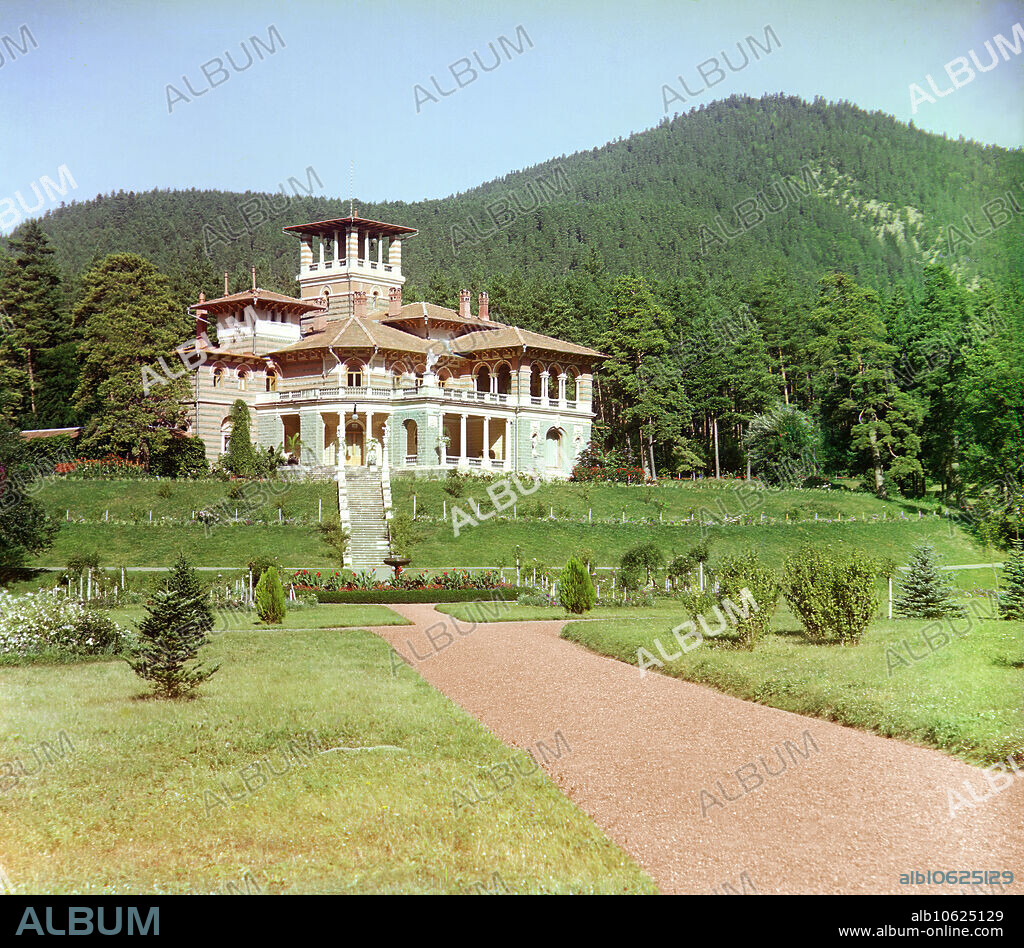alb10625129
SERGEY MIKHAYLOVICH PROKUDIN-GORSKY. General view of the Likanskii Palace from the Kura River, between 1905 and 1915. Creator: Sergey Mikhaylovich Prokudin-Gorsky.

|
Añadir a otro lightbox |
|
Añadir a otro lightbox |



¿Ya tienes cuenta? Iniciar sesión
¿No tienes cuenta? Regístrate
Compra esta imagen.
Selecciona el uso:

Título:
General view of the Likanskii Palace from the Kura River, between 1905 and 1915. Creator: Sergey Mikhaylovich Prokudin-Gorsky.
Descripción:
Ver traducción automática
General view of the Likanskii Palace from the Kura River, between 1905 and 1915. The Likany foothills of the Caucasus Mountains provide a dramatic backdrop for a palace built on the Kura River, close to the Russian border with Turkey and near the town of Borzhomi in present-day Georgia. The Romanov Palace, also known as Likani Palace, was designed by Leon Benois for {/30401/}. Russian chemist and photographer Sergey Prokudin-Gorsky (1863-1944) was a pioneer in colour photography which he used to document early 20th-century Russia and her empire, including the vanishing way of life of tribal peoples along the Silk Route in Central Asia. In a railway-carriage darkroom provided by Czar Nicholas II, Prokudin-Gorsky used the three-colour photography process to record traditional costumes and occupations, churches and mosques - many now Unesco World Heritage sites - as well as modernisation in agriculture, industry and transport.
Técnica/material:
Fotografía
Crédito:
Album / Heritage Art/Heritage Images
Autorizaciones:
Tamaño imagen:
4960 x 4336 px | 61.5 MB
Tamaño impresión:
42.0 x 36.7 cm | 16.5 x 14.5 in (300 dpi)
Palabras clave:
90S • AL AIRE LIBRE • ARQUITECTURA • ASIA • ATRACCION TURISTICA • AÑOS NOVENTA • CASA • CASAS • COLINA • COLOR • COLORIDO • DÉCADA DE 1910 • DECADA NOVENTA • EDIFICIO • EDIFICIOS • EXTERIOR • FOTOGRAFIA • FUERA • GEOGRAFIA • GEORGIA • JARDIN • OUTSIDE • PAÍS • PAISAJE • PAISAJES • PALACIO • PROKUDIN-GORSKY, SERGEY MIKHAYLOVICH • ROMANOV • RUSIA • RUSSIAN • SIGLO XX • SIGLO • TURISMO • VIAJE


 Pinterest
Pinterest Twitter
Twitter Facebook
Facebook Copiar enlace
Copiar enlace Email
Email
